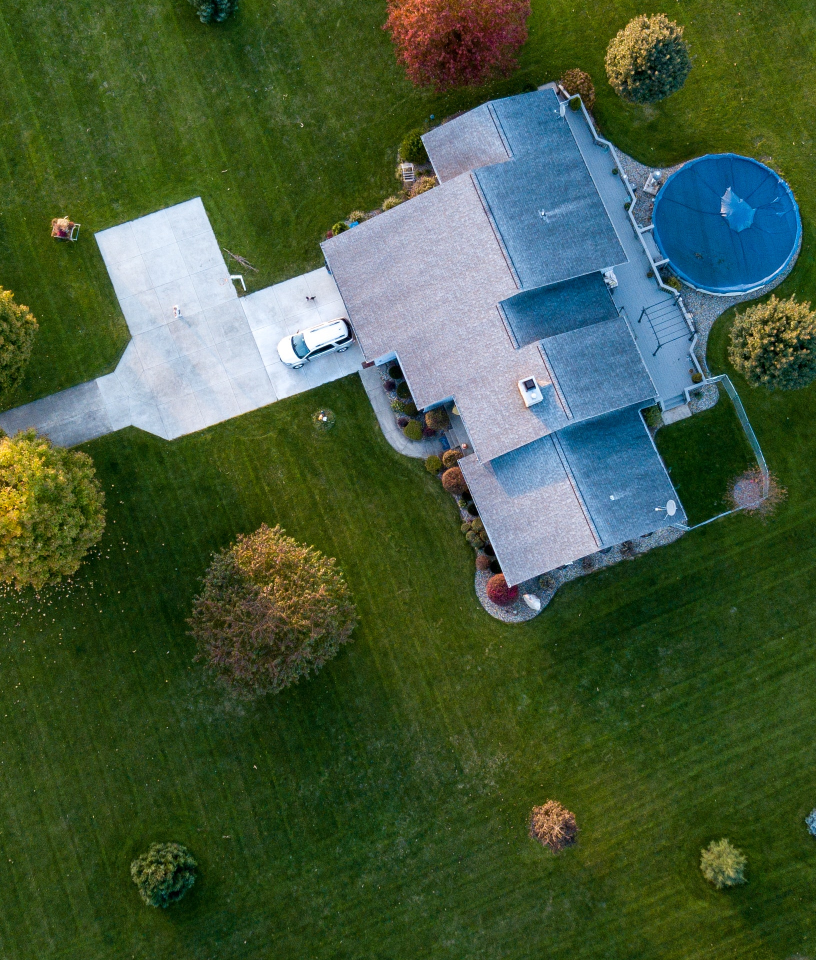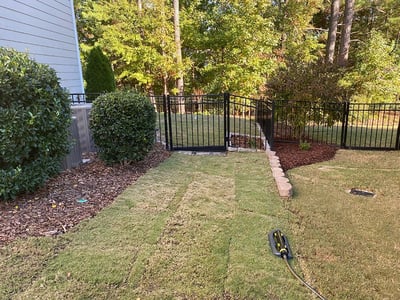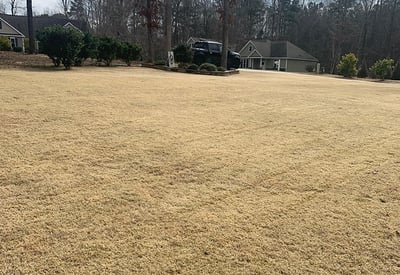
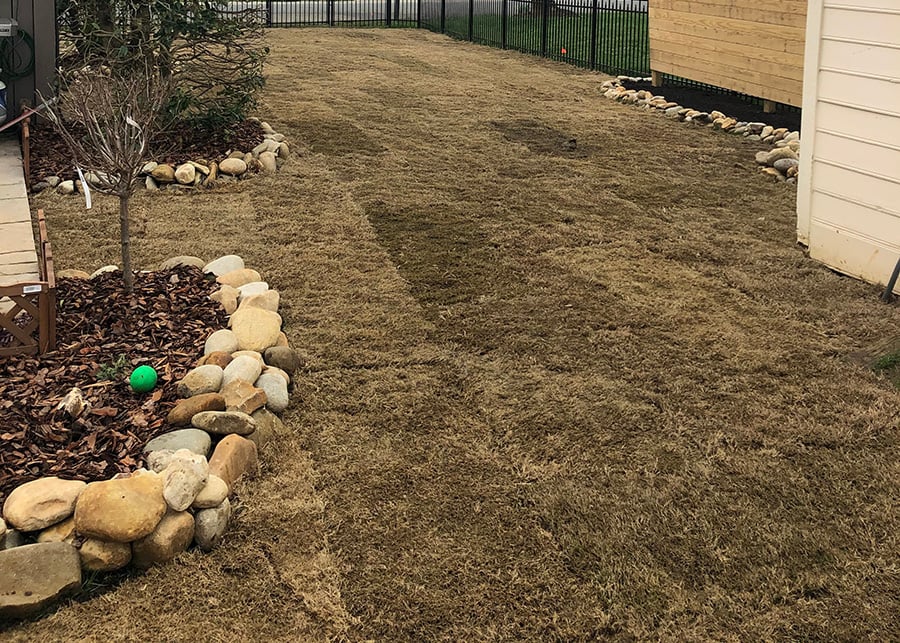
It's almost time for pre-emergent herbicide to prevent summer weeds from germinating!
I know it seems impossibly early, let alone cold outside. But it's true. It's nearly time, so stock up now because spreading pre-emergents in mid-February is our #1 trick for preventing summer weeds, such as crabgrass.
Spring is about to kick off. It's starts with the Forsythia bushes and invisible weed seeds germinating this month. Read on for all our tips during this exciting time.
How to Prevent Summer Weeds
Forsythia is the signal that it's time to apply pre-emergent herbicide. It indicates that the soil is the right temperature for weed seeds to start germinating.
What's a Forsythia? It's that bush with yellow flowers that typically flowers in the middle of February. The rule of thumb is to apply your first spring pre-emergent herbicide when Forsythia starts blooming.
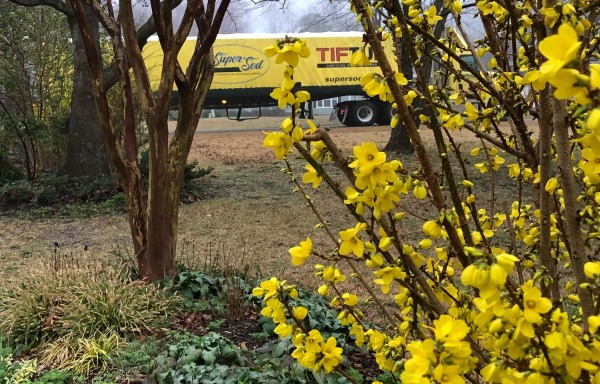 A Super-Sod truck rolling by a Forsythia bush in flower. Photo taken by Brie Arthur.
A Super-Sod truck rolling by a Forsythia bush in flower. Photo taken by Brie Arthur.
In a typical year, if you don't have a Forsythia bush to signal you, apply pre-emergent to established lawns between February 1 and March 1 to kill weeds before you even see them. Any later than that window and it's too late for preventing many summer weeds, such as crabgrass.
We highly recommend going ahead and ordering so you have it ready when it's time to apply it.
You Can Lay Dormant Sod in February
Go for it! If bare spots are driving you crazy or you have made renovations, you can stop all that mud by laying dormant sod.
No problem! Laying dormant sod in winter is "a thing."
In fact, the pic at the tippy top shows newly laid dormant sod - see all the seams still showing? We do recommend you read our article on laying dormant sod for a few important tips.
Getting Rid of Weeds You See Right Now
- During the winter, the best solution for winter weeds is pulling them by hand. This may not be what you want to hear. Happily, there is hope for preventing a weedy infestation next winter and Clare explains the steps in Tackling Winter Weeds.
- If you have a bad infestation and don't want this to happen again, sign up for Lawn Coach and we'll mail you pre-emergent herbicide in September to prevent winter weeds from germinating next year.
- Mow your weeds. If you didn't apply pre-emergent in September to stop the weeds you're seeing now (such as chickweed, annual poa, bittercress), mow those weeds down.
- Post-emergent herbicide in Warm Season lawns: Weather permitting, you can apply post-emergent liquid herbicides like Quincept and 3-Way Max for weeds you can see now in established warm season lawns. These post-emergents work best above 65 degrees and will do their job if we have any extended warm spells. Read the label and follow instructions.
- Mulch suppresses winter weeds in flower beds. Spread your favorite mulch 2-4" thick and keep it 1-2" away from touching the trunks or stems of your plants. Rake/blow leaves off your lawn and into your beds and natural areas rather than bagging them.
Featured Weed - Chickweed
Chickweed plants are starting to grow like crazy and get big! I haven't seen any in flower yet, so if you start weeding them now, before they go to flower and seed, you can start breaking the lifecycle so you'll have less of them to hand weed next year.
Click here to learn all about chickweed and why I don't worry about my pup Rosie "helping" me while I hand weed some stray chickweed out of the natural areas. She drags them onto my Zoysia lawn to "kill" them.

Fertilizing Tips for Warm Season Lawns
- Whatever you do, don't apply nitrogen this time of year when your warm season lawn is dormant. It's still time to rest. Avoid "weed and feed" and "winterizer" product marketing - these products usually contain nitrogen and nitrogen will push growth during a time that can cause cold damage to your lawn.
- It's okay to apply our 0-0-7 pre-emergent herbicide (to prevent summer weeds) since it doesn't have nitrogen in it. Nitrogen is the first number, in this case zero.
- Likewise, hold off aerating warm season lawns until they fully green up in the spring.
Mowing Tips for Warm Season Lawns
- Nothing to mow this month, unless you need to mow any winter weeds that are thriving.
- If you have not done so already, "winterize" your mower by:
- Cleaning off plant debris
- Draining gas so it doesn't sit with stale gas all winter
- Purchasing spark plug, oil, air filter, and fuel filter so you have them handy to change out before mowing season
- Sharpening or replacing your mower blades in preparation for when spring mowing commences
Come back next month for March Lawn Tips for Warm Season lawns!
If you have a Tall Fescue lawn (the best cool season lawn for the Southeast), read our blog with February tips for Tall Fescue lawns.
Got questions? Leave a comment below!
New here? Subscribe to our emails to get this information in your inbox every month.



